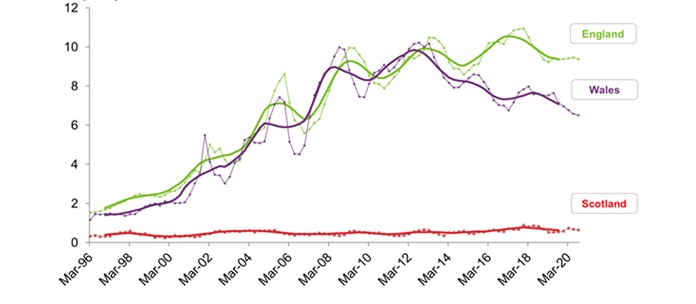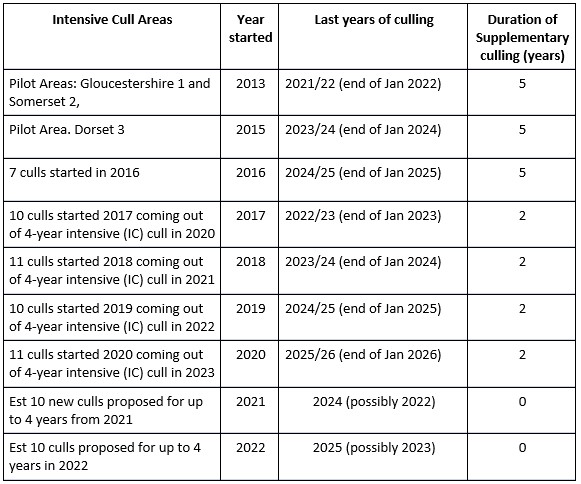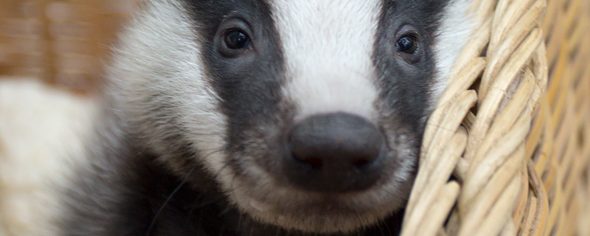On 27th January 2021, Defra published a new consultation on parts of its March 2020 “Next Steps” Bovine TB eradication policy for England. This aims to continue to mass kill badgers in the last 30% or so of badger strongholds in the High Risk Area of the West of England and across parts of the Edge and Low Risk Areas for the foreseeable future.
Defra intends to make small changes over the next six years as it moves towards ramping up more localised badger culling and apparently some badger vaccination, once populations have been freshly decimated. The final twenty, up to 4-year intensive culls starting in 2021 and 2022 may, with existing kills, shoot up to around a further 150,000 badgers between this Autumn and February 2026. A sickening ‘keep to plan’ commitment with ‘killing as usual’.
The new consultation does not address the policy expansion of ‘reactive’ (localised) culling of 100% of badgers taking place in the Low Risk Area (as e.g. already in parts of Cumbria & Lincs) and potentially across the entire English countryside from the mid-2020’s. Like the March 2020 policy, the recent consultation was unfathomably branded in the media as a major ‘shift in policy’ and ‘badger culling coming to an end’ or ‘banned’.
However, the 6-year phasing out of Supplementary badger culling (SBC), both as a long term sustained killing policy and as a post-intensive cull option, is one of the more notable decisions. As the method for keeping badger numbers low in High Risk bTB Areas, its overdue departure is more than welcome.
This is a victory for those who have funded and supported the Badger Crowd coalition of Badger Groups, Trusts and charities plus many individuals, who enabled legal action against SBC when it was introduced in 2017, based on secret un-reviewed modelling. The High Court challenges unearthed internal government rationales and they unpeeled the policy decisions. Finally High Court judges only just found favour in government using the Protection of Badgers Act 1992 to introduce SBC, despite the exposure of it as a risk-laden experiment.
Government has spent up to £2 Million over the last 5 years responding, defending and reacting to Judicial Reviews brought by the Badger Crowd and has now made huge concessions in the two cases that went to trial. So a moment of thanks, to all those challenging the policy in a wide variety of ways and to the legal team and experts who have combined so ably to help bring about these significant shifts. It is not unusual for government policy documents, considerations and briefings to now make reference to legal constraints and challenges.
Government giving up on Supplementary culling is a logical reaction to what is being seen on the ground by vets and farmers – no tangible benefits in bTB reduction after huge effort and expenditure killing badgers. At time of writing, two further Badger Crowd Judicial Review applications are still extant, seeking change to the government’s badger culling policy, including the 2020 policy for which this consultation applies.
The inevitable reduction and plateauing of the rate of increase of bTB breakdowns in the English HRA is not unlike the pattern in the Republic of Ireland. (Figure 1), where the futile killing of badgers now sees bTB herd incidence levels that are similar to those of ten years ago, with cattle testing and movement controls still very poorly addressed.
Figure 1. Bovine TB herd incidence in the Republic of Ireland.

Source: most recent DAFM stats (NI Badger Group)
Likewise, the rate of spread of bTB in the Welsh and English countryside starts to level off (England), with a clear downward trend in Wales since 2012. But it offers no evidence that badger culling plays any part. Defra can see that Wales is out-performing England, without culling badgers (Figure 2.)
Figure 2. New herd incidents per 100 herd years at risk of infection during the year, GB, per quarter.

Link to data source
Defra also know that the former chief scientist supporting the culls has said in legal exchanges that a first look at cull efficacy would require six cull areas to be studied for four years, plus the following year as an observation period. This might give enough data for a tentative indication of efficacy to be seen, but even then not a very strong one. So the results might not be that reliable and any true contribution (from badger culling) to bTB eradication will always remain obscure.
It is likely that an analysis of the outcomes of four years of culling using the ‘new in 2016’ badger cull cohort data, plus one observation period (to Sept 2020) has now been completed but not disclosed.
Government scientists following policy science (the RBCT and RBCT-derived work) might say the lack of any substantial change in bTB prevalence is either because the conditions of the RBCT don’t apply to real-time control effort, or/and that cattle measures are inadequate. Or it could be that Supplementary Culling is removing any putative bovine TB benefits. This was predicted as a distinct possibility within peer-reviewed science a few years before badger culling started.
Defra should know its modelling projections are more than dubious. In addition to George Eustice’s usual reading-out of the government position script, the Chief Veterinary Officer Christine Middlemiss has also disgracefully again promoted on BBC Farming Today, the fantasy of badger culling working, to try to mislead farmers and the public. Why the government bare-faced lies?
The new consultation: details on badger measures
Table 1. Summary of what the new consultation is proposing in relation to intensive and supplementary culling only.

The new Consultation includes (proposal 6.) restriction of Supplementary Badger Culling (SBC) licenses for those four year intensive culls commencing on and after 2017, to two years duration (rather than five) and to cease the re-issuing of SBC licenses for the first three areas in Gloucestershire, Somerset and Dorset after completion of 5 years of SBC. This is a phasing out of Supplementary Culling over six years and by the end of January 2026.
The general effect of the proposals is to reduce current culling durations from 9 to 6 years and new intensive four year culls to possibly a 2-yr duration, according to decisions by the Chief Veterinary Officer. There is some rather tortured Defra speculation (rehearsed in court in 2018/19) on why theoretical bTB breakdown reduction can be achieved from just two years of Intensive Culling. As usual this guesswork rests heavily upon multiple uncertainties.
Badger Crowd supporters have helped take-on the government for three years now, to some good effect and the work is far from over. Thanks to all who have contributed generously so far. We will not rest until we have justice for badgers and proper science-based solutions for farming and wildlife that are not simply a ruinous waste of public funds and wild animal lives.
Discover more from The Badger Crowd - standing up for badgers
Subscribe to get the latest posts sent to your email.

